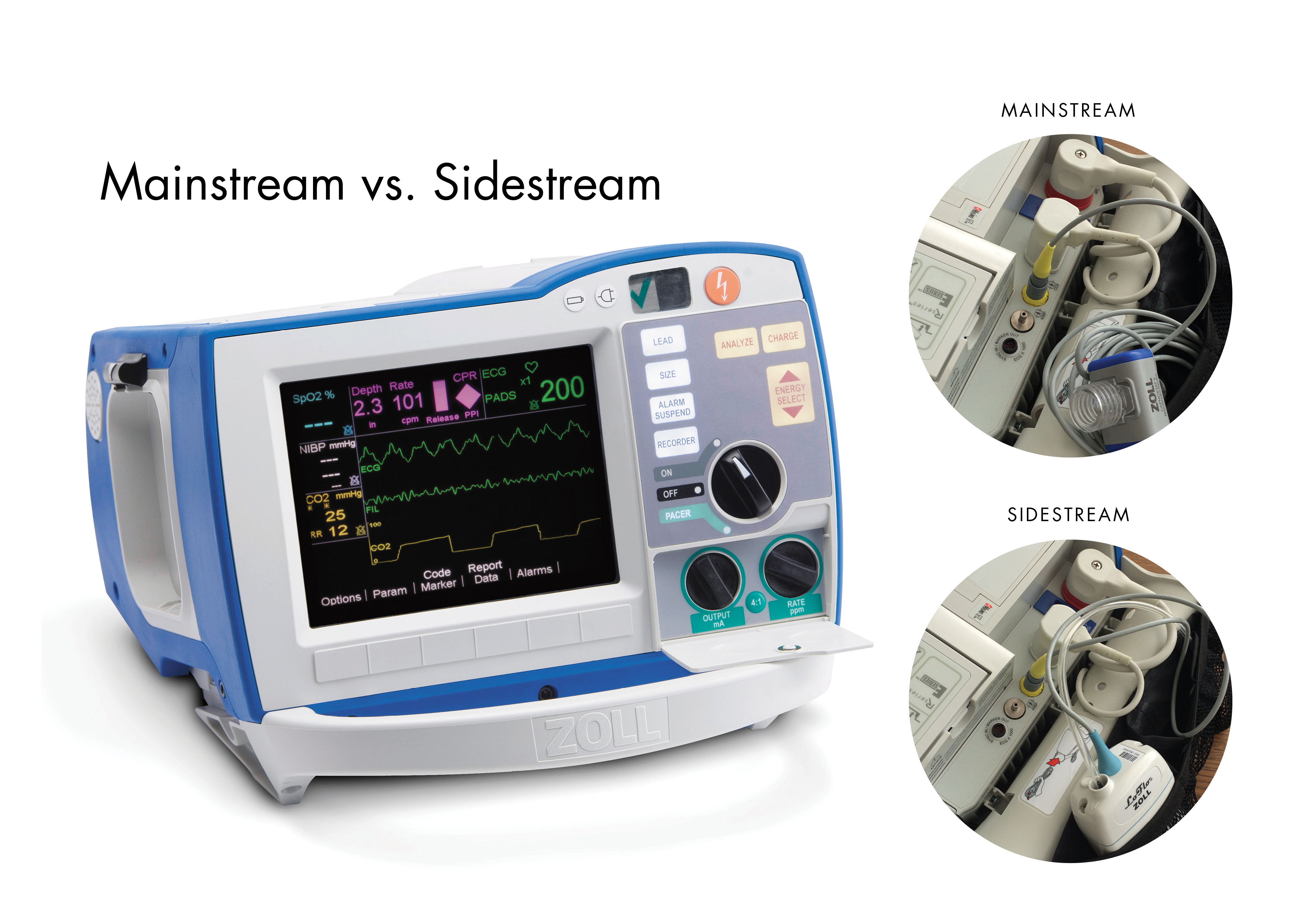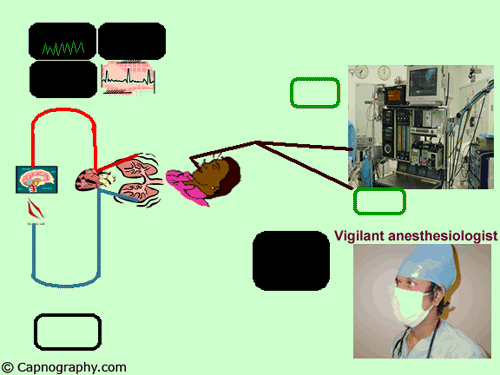end-tidal co2 monitoring standard of care
In fact its commonly called the ventilation vital sign. ETCO2 levels reflect the adequacy with which carbon dioxide CO2 is carried in the blood back to the lungs and exhaled.

Standard Six Paremater Icu Monitor Ibp And Etco2 Optional Medical Medical Equipment Icu
To identify the role of end-tidal carbon dioxide EtCO2 monitoring during polysomnography in evaluation of children with obstructive.

. Throughout the resuscitation end-tidal carbon dioxide was consistently in the 2836 mmHg range during ventricular fibrillationCPR. 11 End Tidal CO2 monitoring ETCO2 via waveform capnography should be used to confirming correct placement of the endotracheal tube andor measure the adequacy of ventilation 12 For patients in cardiac arrest end tidal CO2 is a useful adjunct to treatment 121 Note. End tidal carbon dioxide monitoring is an important addition to oximetry for detecting respiratory depression Data in the literature does not support substituting oximetry for capnography when monitoring respiratory depression and some investigators have concluded it.
Use of heart rate electrocardiography noninvasive and arterial blood pressure atrial pressure pulse oximetry and end-tidal carbon dioxide monitoring in the pediatric critical care unit is commonplace. This practice however is not supported by well-controlled clinical trials. It is the standard of care during certain procedures such as intubations and sedations and can be used in variety of clinical situations.
These levels of carbon dioxide were consistent with effective chest compression generating reasonable pulmonary blood flow justifying continuation of resuscitation. Capnography for monitoring ventilation - 2011. Properly placed endotracheal tubes may become displaced due to movement of patients andor equipment.
However ETCO2 may be underused in the PED setting. Continual monitoring for the presence of expired carbon dioxide. Measurement of end-tidal CO2 therefore requires.
End-tidal carbon dioxide detection is the most accurate technology to evaluate endotracheal tube posi-tion in patients who have adequate tissue perfusion. Continuous assessment of correct endotra-. The PaCO 2 value varied from 19 to 86 mmHg.
Also called capnometry or capnography this noninvasive technique provides a breath-by-breath analysis and a continuous recording of ventilatory status. End-tidal carbon dioxide ETCO 2 monitoring is readily available easily used and a standard of care in the operating suite and in the critical care setting. End tidal carbon dioxide ETCO 2 monitoring is the noninvasive measurement of exhaled CO 2The Intensive Care Society guidelines include ETCO 2 monitoring as one of the objective standards required for monitoring patients in transport and the American Heart Association recommends that all intubations must be confirmed by some form of.
End-tidal carbon dioxide ETCO2 is the level of carbon dioxide that is released at the end of an exhaled breath. Identification of expired CO2 to verify correct positioning of an endotracheal tube or laryngeal mask. End-tidal CO2 may be useful here as an easily and immediately measurable index of changes in cardiac output.
Despite the majority of literature being case series expert opinion would suggest. CO2 monitors measure gas concentration or partial pressure using one of two configurations either. With continuous technologic advancements EtCO2 monitoring has become a key component in the advancement of patient safety within anesthesiology and the American Society of Anesthesiologists ASA has endorsed end-tidal capnography as a standard of care for general anesthesia and moderate or deep procedural sedation.
In this study the aim was to review the applications of end-tidal carbon dioxide ETCO2 monitoring in emergency department multiple databases were comprehensively searched with combination of following keywords. End-tidal CO2 ETCO2 monitoring is not a new modality in the pediatric emergency department PED and emergency department. Defined as the monitoring of exhaled carbon dioxide through the respiratory cycle Measuring of End tidal CO2 is considered a standard of care for confirming endotracheal tube placement An important adjunct for assessing a critical patient The Journey of A Molecule Through the Respiratory Cycle.
For this reason capnography is currently the most widely recommended method for monitoring ETCO258. End-tidal carbon dioxide ETCO 2 monitoring is readily available easily used and a standard of care in the operating suite and in the critical care setting. The nurses will initiate End Tidal CO2 monitoring via special nasal cannulas that are used with the pain pumps for narcotic administration.
ETCO2 emergency department monitoring and critical. After profound circulatory collapse the end tidal CO2. Standard for every patient receiving general anesthesia.
An increase in etCO2 by 5 appears to have reasonable sensitivity 71-91 and specificity 94-100 for fluid responsiveness in two studies of patients breathing passively on the ventilator. Pulmonary blood flow CO2 from lungs to heart. End-tidal carbon dioxide ETco 2 monitoring provides valuable information about CO 2 production and clearance ventilation.
The Respiratory Care Department will initiate and maintain non-invasive monitoring of end-tidal CO2 as ordered by the physician in the intensive care ED and step-down units. In the current New Jersey Standards for Hospital Facilities with which hospitals must comply on pain of losing their licenses one finds the following in the section on anesthesia supplies and equipment. Ventilation effective movement of gas in and out of the lungs.
Capnograph is an indispensable tool for monitoring metabolic and respiratory function. End-tidal carbon dioxide monitoring shall be performed continuously on all patients receiving general anesthesia. When a capnometer is available and the machine is warmed-up connection to the ventilatory circuit takes.
When capnography or capnometry is utilized the end tidal CO2 alarm shall be audible to the anesthesiologist or the anesthesia care team personnel When ventilation is controlled by a mechanical ventilator there shall be in continuous use a device that is capable of detecting disconnection of components of the breathing system. Where CO2 Monitoring Is Used Exhaled CO2 monitoring has been used as a standard of care in operating rooms for many years. However end-tidal CO2 monitoring is helpful in measuring how the carbon dioxide is being used in the body.
Venous return CO2 from tissue to heart.

Pin On Non Invasive Blood Pressure Monitors

Understanding Ventilation Vs Oxygenation Is Key In Airway Management Airway Management Control System Modern Tech

Examining The Physio Control Lifepak Defibrillator Line Physio Emergency Medical Control

8inch Unique Design Patient Monitor Model Md908 Thermal Printer Unique Designs Design

Mindray Accutorr 7 Vital Signs Monitor Vital Signs Monitor Vital Signs Monitor

A Systematic Approach To Capnography Waveforms Rt

End Tidal Co2 Monitoring In The Pre Hospital Environment More Than Just Endotracheal Tube Placement Confirmation Journal Of Paramedic Practice

A Systematic Approach To Capnography Waveforms Jems Ems Emergency Medical Services Training Paramedic Emt News









